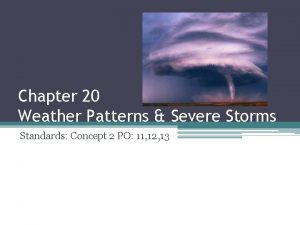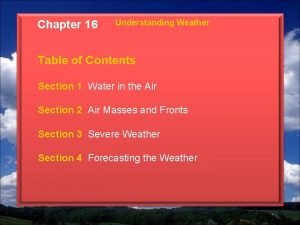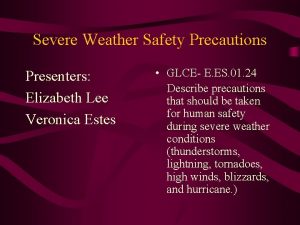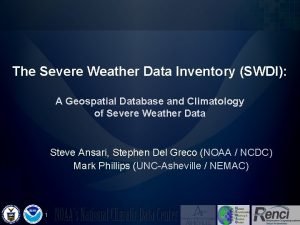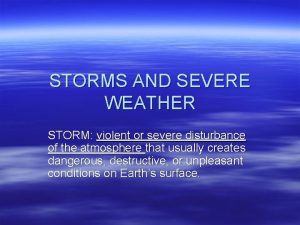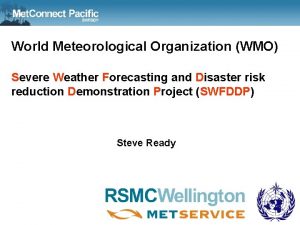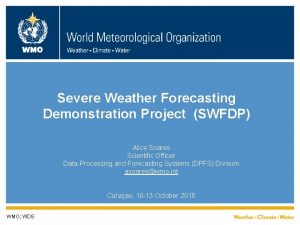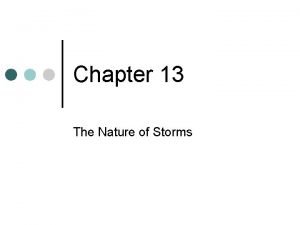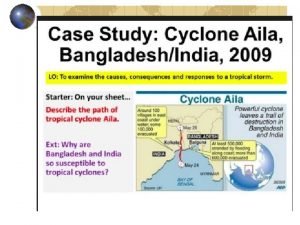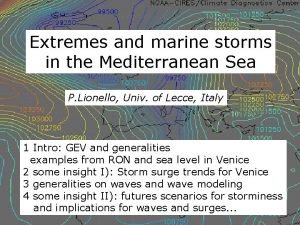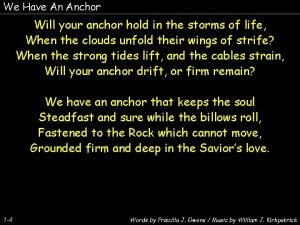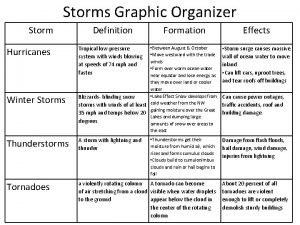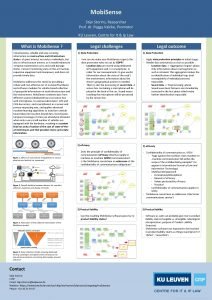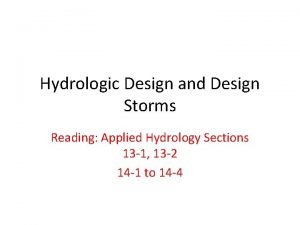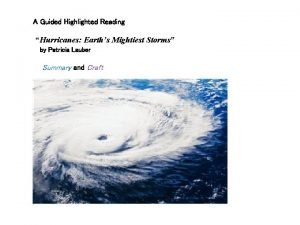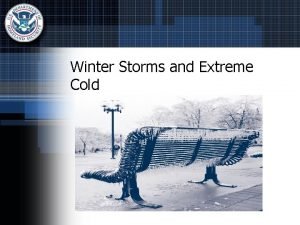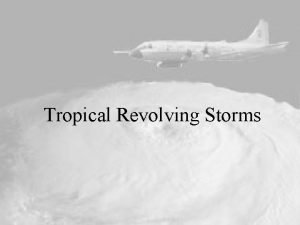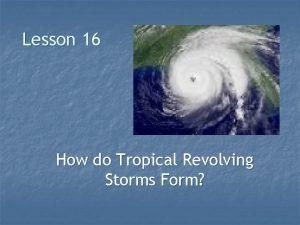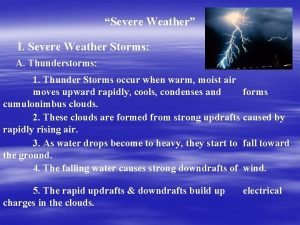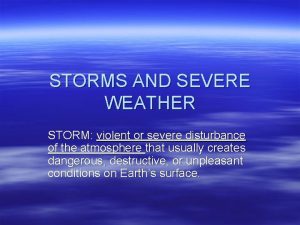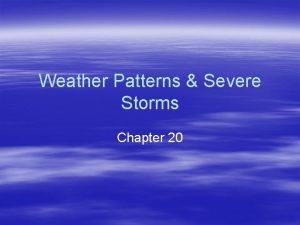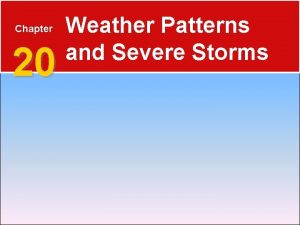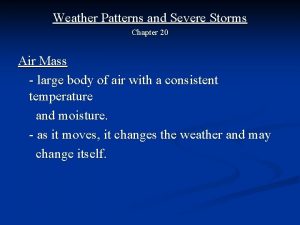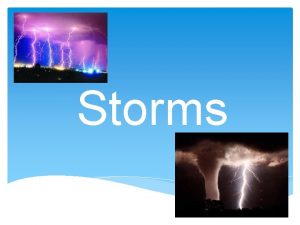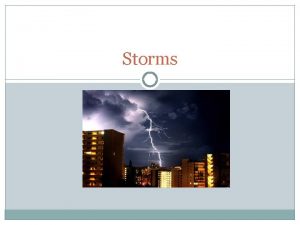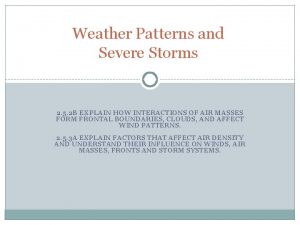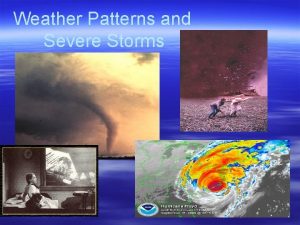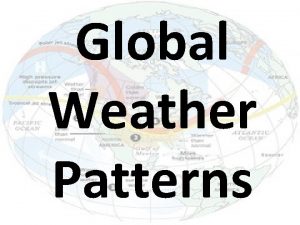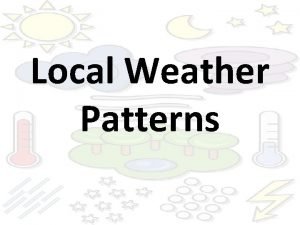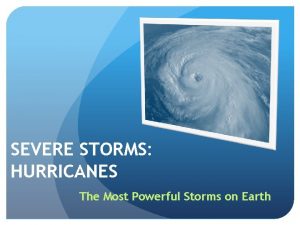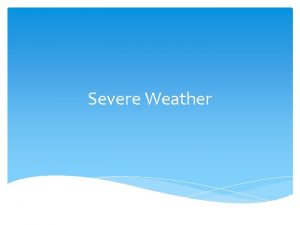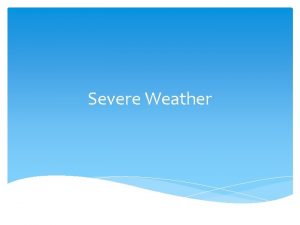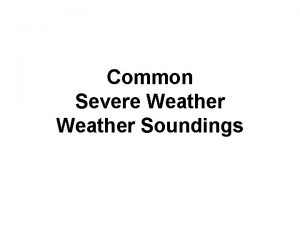Weather Patterns Severe Storms Chapter 20 20 1





























- Slides: 29

Weather Patterns & Severe Storms Chapter 20

20. 1 and 20. 2

• a large body of air that has the same temperature and humidity throughout • classified according to where they originate • during the time the air mass is over an area, it determines the weather of that area

As an air mass moves away from where it formed and into a new area, it carries its temperature and moisture conditions with it. Example: Frigid Canadian Air Mass

Classifying Air Masses Source Region: the area over which an air mass gets its characteristic properties of temperature and moisture. There are 4 source regions used to name air masses…

1. Originates over the ocean Maritime: humid air mass (m)

2. Originates over the land Continental: dry air mass (c)

3. Originates in cold air Polar: cool air mass (P)

4. Originates in warm air Tropical: warm air mass (T)


Maritime Tropical Atlantic (m. T) • moves northward across eastern United States • brings mild & cloudy winters and hot & humid summers with hurricanes & thunderstorms


Fronts: boundary between two air masses having different temperatures and humidity

• Warm air moves into an area formerly covered by cooler air • warm air gradually rises & cools to produce clouds • brings hot, humid days and light-to-moderate precipitation over a large area

Warm Front Animation


• Cold, dense air moves into a region occupied by warmer air • Form and advance rapidly, forcefully lifting air • Brings heavy downpours and gusty winds (squalls) followed by clear cold air (high pressure)

Cold Front Animation Cold Front vs. Warm Front



• When an active cold front overtakes a warm front • Cold air wedges the warm front upwards • Complex weather results…may start with heavy rain and strong wind as warm front is lifted, then shift to long period of light rain



• Surface position of the front does not move • Air on either side of a front moves parallel to the front • Gentle to moderate precipitation



• small-area storms formed by the strong upward movement of warm, moist, unstable air • always accompanied by lightning, thunder, and usually rain • formed from cumulonimbus clouds

Observe an animation of a thunderstorm.

Air-mass thunderstorm: • form in warm, moist air mass • occur in spring and summer- last less than 1 hour • single, widely scattered
 Chapter 20 weather patterns and severe storms
Chapter 20 weather patterns and severe storms Chapter 20 weather patterns and severe storms
Chapter 20 weather patterns and severe storms Chapter 16 section 1 water in the air answer key
Chapter 16 section 1 water in the air answer key Severe weather safety precautions worksheet
Severe weather safety precautions worksheet Severe weather data inventory
Severe weather data inventory Severe weather graphic organizer
Severe weather graphic organizer Wmo severe weather
Wmo severe weather Wmo severe weather
Wmo severe weather Bill nye severe weather
Bill nye severe weather Chapter 13 the nature of storms
Chapter 13 the nature of storms Global distribution of hurricanes
Global distribution of hurricanes Amun ra and ra
Amun ra and ra Storms in the mediterranean sea
Storms in the mediterranean sea Egyptian god of storms
Egyptian god of storms Jo storms
Jo storms Fastened to the rock which cannot move
Fastened to the rock which cannot move Winter storms definition
Winter storms definition Stijn storms
Stijn storms Freddy storm
Freddy storm Hurricanes tropical storms
Hurricanes tropical storms Hyetograph example
Hyetograph example Hurricanes earth's mightiest storms
Hurricanes earth's mightiest storms Winter storms facts
Winter storms facts Tropical revolving storms
Tropical revolving storms Stijn storms
Stijn storms Tropical revolving storm
Tropical revolving storm Mark storms
Mark storms Weather station model
Weather station model Tongue twisters whether the weather
Tongue twisters whether the weather Whether the weather poem
Whether the weather poem

